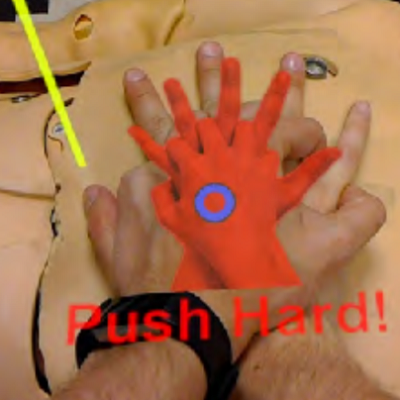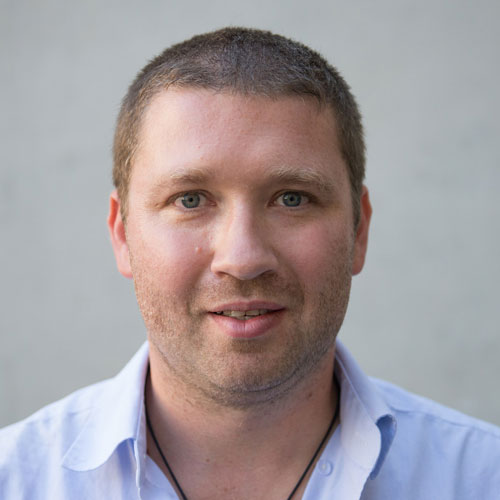

Professor Nadir Weibel
On Oct. 12, CSE associate research professor Nadir Weibel and some of his students gave a public talk and demonstration at the Fleet Science Center in Balboa Park. The presentation was titled, "Game Changer: Ubiquitous Computing for Health at UC San Diego," and the talk was part of series in connection with the Fleet's ongoing exhibition, "Game Masters", which opened July 1and runs through January 15, 2018. On the third Thursday of every month, the Fleet invites local scientists, researchers and engineers to talk about how video game technology is helping them find imaginative solutions to the world's challenges. The first three speakers in the series were all from UC San Diego: CSE faculty-affiliate and structural engineering professor Falko Kuester, CSE lecturer Jurgen Schulze, and Qualcomm Institute neuroscientist Leanne Chukoskie.

Vish Ramesh and Danilo Gasques Rodrigues
Weibel's students co-presenting with him at the outreach event are members of his Human-Centered and Ubiquitous Computing Lab. They included CSE Ph.D. student Danilo Gasques Rodrigues, CSE M.S. student Janet Johnson, and Bioengineering Ph.D. student Vish Ramesh. Weibel also presented some of the work of CSE Ph.D. student Steven Rick.
The talks explored how gaming technologies, such as Kinect and goggles for virtual reality (VR) and augmented reality (AR), are being used to change the medical field.
In their talks, Weibel and his students showcased current technologies they are researching and developing in the lab. The researchers explained how the Kinect gaming sensors can be used to monitor the human body in action, as well as for hand and gesture tracking, sign language and even to help diagnose stroke (based on changes that may affect movement in the patient's upper body. The researchers have come up with an approach they call UbiStroke, which outlines specific measurements to determine impairment from stroke, including pupil tracking, finger tracking, posture detection, speech processing, synchronicity of movements, and electroencephalography (EEG). Taken together, these measurement tools can improve diagnosis of stroke, which is critical because there is a 3-hour window to administer the main drug for the vast majority of strokes.

device improves speed and effectiveness.
The team also showed how "mixed reality", which combine AR, VR and regular vision, can be used to greatly increase the success rate in dealing with cardiac arrests outside of a clinical setting. "We compared participants' ability to perform CPR with the aid of a checklist in Mixed Reality, and on a tablet interface," they noted. Using a HoloLens VR system, and superimposing animated hands over the location of the user's own visible hands, the team found that civilians used the right technique for chest compressions at double the rate unprompted. They also placed the defibrillator pads at the correct location on the patient over 66% of the time, versus barely 36% of the time when the same users only had access to a tablet to guide them. They also responded much faster.
The evening event attracted a multi-generational crowd to the Fleet Science Center and its Heikoff Giant Dome Theater.

